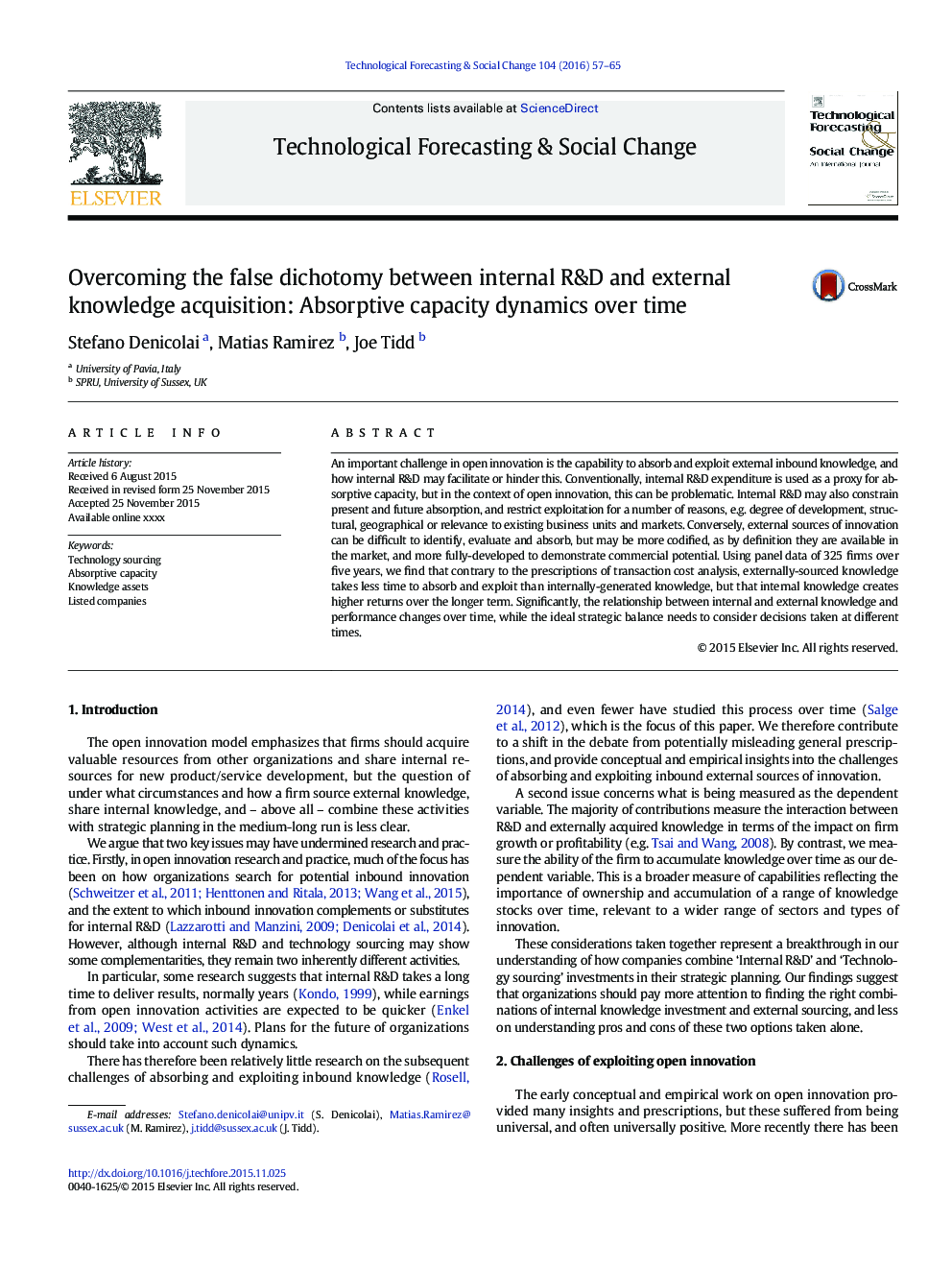| Article ID | Journal | Published Year | Pages | File Type |
|---|---|---|---|---|
| 7256084 | Technological Forecasting and Social Change | 2016 | 9 Pages |
Abstract
An important challenge in open innovation is the capability to absorb and exploit external inbound knowledge, and how internal R&D may facilitate or hinder this. Conventionally, internal R&D expenditure is used as a proxy for absorptive capacity, but in the context of open innovation, this can be problematic. Internal R&D may also constrain present and future absorption, and restrict exploitation for a number of reasons, e.g. degree of development, structural, geographical or relevance to existing business units and markets. Conversely, external sources of innovation can be difficult to identify, evaluate and absorb, but may be more codified, as by definition they are available in the market, and more fully-developed to demonstrate commercial potential. Using panel data of 325 firms over five years, we find that contrary to the prescriptions of transaction cost analysis, externally-sourced knowledge takes less time to absorb and exploit than internally-generated knowledge, but that internal knowledge creates higher returns over the longer term. Significantly, the relationship between internal and external knowledge and performance changes over time, while the ideal strategic balance needs to consider decisions taken at different times.
Related Topics
Social Sciences and Humanities
Business, Management and Accounting
Business and International Management
Authors
Stefano Denicolai, Matias Ramirez, Joe Tidd,
